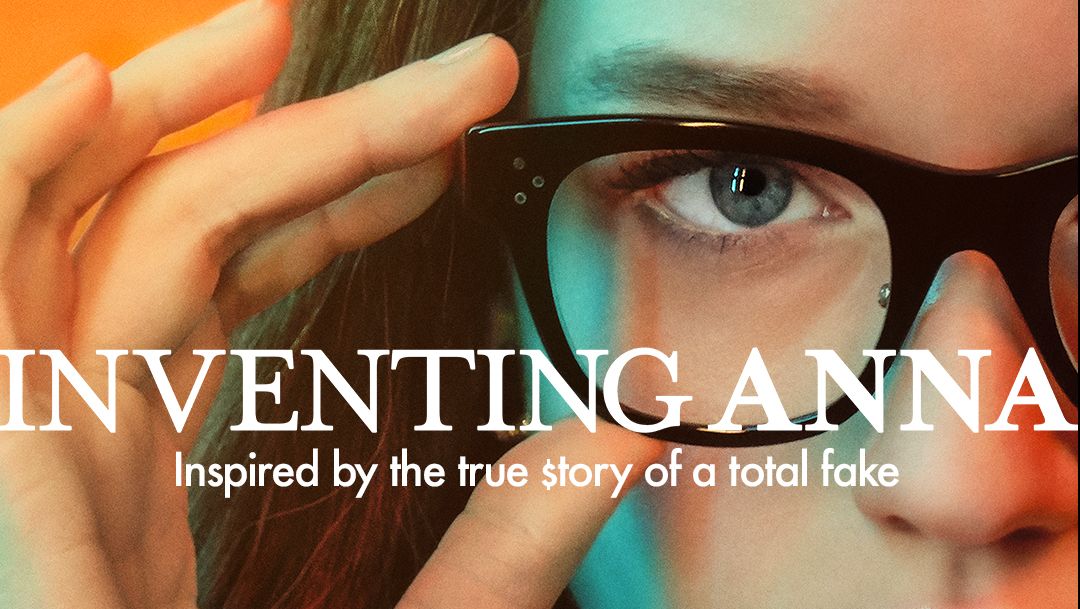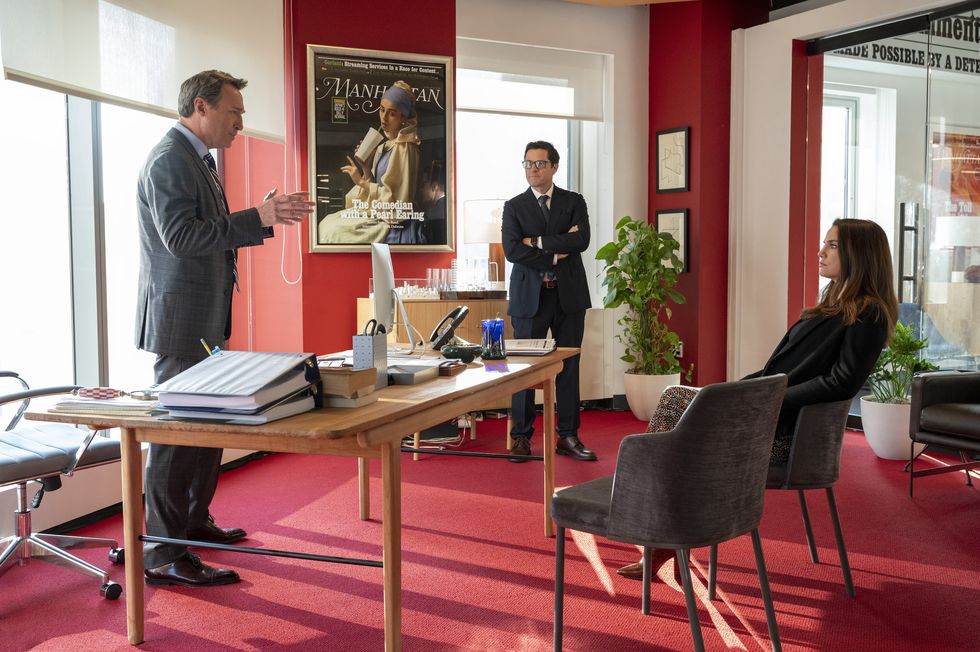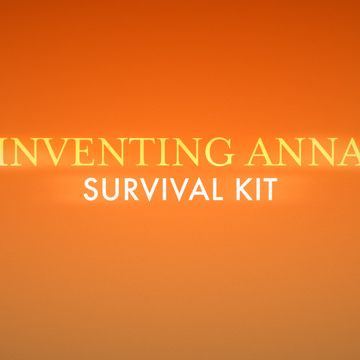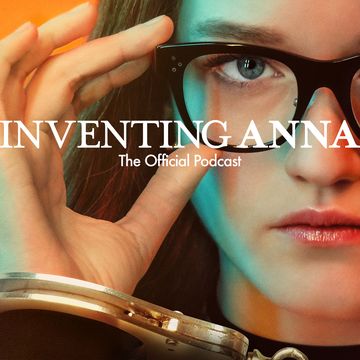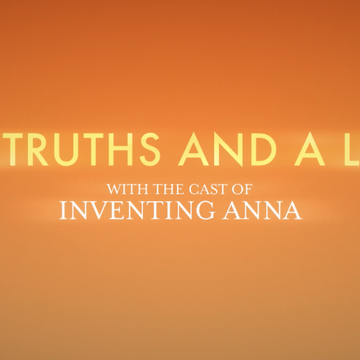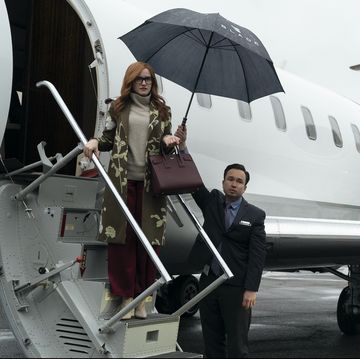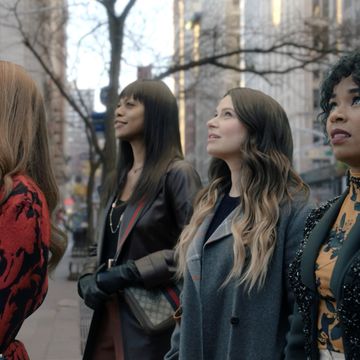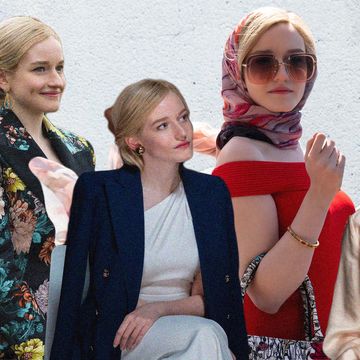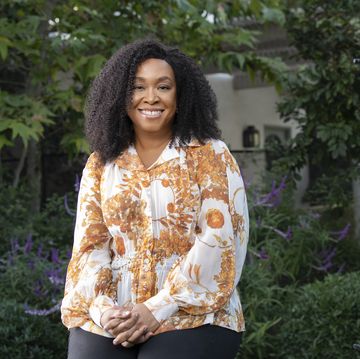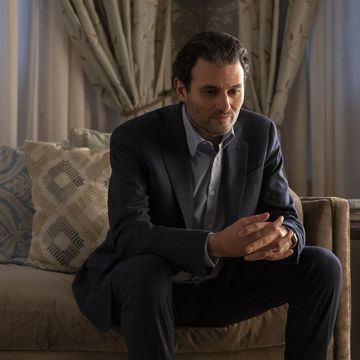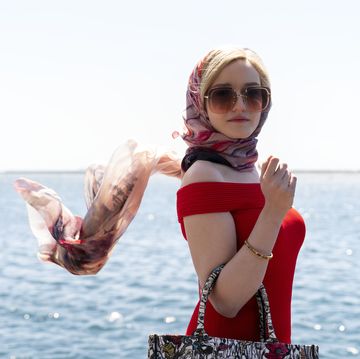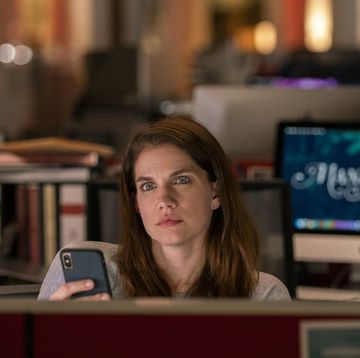“I’ve had moments where I go, ‘What is it like in Mongolia this time of year?’” says Jessica Pressler when asked how she feels about seeing herself portrayed in a TV show. It’s the second time Pressler — a journalist and staff writer at New York magazine who has also written for outlets like GQ, Elle, and Esquire — has been depicted, of sorts, on-screen. The first came when Julia Stiles played an investigative journalist named Elizabeth, who was loosely based on Pressler, in Hustlers, the 2019 Jennifer Lopez and Constance Wu film based on Pressler’s New York magazine article “The Hustlers at Scores.” And now, Anna Chlumsky plays Vivian Kent, a journalist looking for the next big story to buoy her out of a professional slump, in Shondaland and Netflix’s latest limited series, Inventing Anna, also based on a Pressler article, “How Anna Delvey Tricked New York’s Party People.”
Once the article was published in 2018, the calls started rolling in almost immediately to try and option the story. Ultimately (and which we go into detail about below), Pressler chose Shonda Rhimes to steer her hard-won investigative piece into the world of television and create another fictionalized version of herself.
“The weirdest thing is how incredibly real things come up against things that are totally not real,” says Pressler via Zoom from her New York City apartment. “It’s jarring to hear something you said coming out of somebody else’s mouth in a different context. It’s strange. But I was prepared for it since I’d gone through it once already. And I’m really glad to have had the experience because it’s the experience that my subjects have.”
The overlap of these two projects is not lost on Pressler. It was a court photographer, Steven Hirsch, whom she met while researching the “Hustlers” story, who tipped her off to Delvey. And when the movie Hustlers was being filmed in 2019, Anna Delvey’s — or Anna Sorokin’s, actually — trial was underway, and the Inventing Anna writers’ room opened.
Pressler — originally from Massachusetts and with a BA in English from Temple University in Philadelphia — has been a staff writer at New York magazine for more than a decade and has produced some of the publication’s most compelling and prolific work. In addition to writing for numerous other publications, she’s also currently working on the book version of the Anna Delvey story, because there is seemingly endless fodder when it comes to deep diving into a con artist.
“Is she evil, or is society evil?” Pressler posits quite often. “Which is it? I don’t know. She was kind of allowed to become this because this is the way the world is. And it’s pretty fascinating.”
Though Pressler is admittedly averse to getting interviewed — and much prefers to be asking the questions — I was able to talk with her about what it was like to be a part of Inventing Anna and what she actually thinks about Anna Delvey after spending so much time with her.
VALENTINA VALENTINI: Who approached you, and when? What was that first part of the process like to get your article made into a TV show?
JESSICA PRESSLER: It was insane. Honestly, it feels awkward talking about it. I have never experienced anything like it before, and I’m likely to never experience that again. I was enormously pregnant. I’d finished the story weeks away from having a baby, and it was just this avalanche of phone calls from everybody I’ve ever admired in the entertainment industry. You would think that that would be wonderful and a dream, but it was also a nightmare because I had to say no to all those people except for one person. I’m lucky, by the way, that I got to even be on those phone calls because I think that a lot of places don’t let writers [of the original material] get involved in that anymore.
VV: Of course, we know you said yes to Shonda Rhimes. But what was that like? Why did you pick her and Shondaland?
JP: There was all this craziness and energy in the other phone calls, and somehow, when I had the call with Shonda, that was the calmest phone call I’d ever had. There was some music playing when I was on hold; it was so soothing. It was like the moment in Scandal where Olivia looks at Fitz, and the Motown starts playing, and love happens. It was a very relieving feeling I had. And saying yes to Shonda made it so much easier to say no to all the others because when I told them who I was going with, no one was mad about that. Because it’s SHONDA.
VV: Was there any hesitancy to turn your article — Anna’s story — into a TV show?
JP: First of all, there wasn’t a choice. Someone was going to do it, and it was happening. But it was a stressful decision because I wasn’t just thinking about who was going to make the best show or movie; I was thinking about who is going to treat the real people involved properly. Who’s going to listen to them? That was important.
VV: You’re one of the producers on the show. How does that work? Was that a must-have for you?
JP: I don’t even think that was my idea, to be totally honest. I think my agent brought it up. It didn’t mean very much to me. I hadn’t been on Hustlers, and even though [writer-director] Lorene Scafaria and I talked a lot, I wasn’t involved other than that. But I do think it’s important for a writer to be attached to and a part of something that is based on their work, even if you’re not a part of the creative process. And I wasn’t involved in the day-to-day of making Inventing Anna either, but it was a revolving and open door.
VV: How much of what we’re seeing on-screen is similar to how you investigated this story?
JP: I did not have a murder wall. And not in the baby’s room. I wish I had — I’m a little bit jealous of Vivian’s. And I did not miss an ultrasound appointment either. The time lines are different, and the way that it unfolds is different. It’s one of those things that parts of it are very real, and then there are bits that are totally made up. So, in many of the interviews that happen, the characters in the show are saying things that people absolutely said to me, but the situation is different, and the way that it’s set up in the show is different. Vivian is still reporting the magazine article in the show, but I was done with the magazine article when I did a lot of the interviews that are in the show. After the magazine article came out, I’d done a lot of interviews for the book I’m writing.
I will say that the tone was very different than me in real life. Journalists on television are a lot more confrontational. I don’t know if that’s because other journalists are more confrontational, but I would never go into an initial interview and, like, have an argument with someone. I did argue with people later on, like when they said they didn’t want their name in the story. But I think that type of confrontational attitude is just for television.
VV: Is it hard to take off your journalist hat, where you stick to the facts, and allow for creative room in that narrative TV setting?
JP: Oh, sure. I gave notes where I was nitpicky about silly things that, when I then see it on the show, I understand why it makes more sense in that medium. Like, they added all these boxes of discovery documents instead of a digital file, which is what they were actually stored on. So, a digital file is not quite as good-looking on screen. To the writing team’s credit, they listened to these nitpicky, kind of ridiculous notes that I was giving them. I mean, I deal in facts, but it’s a fictional show.
VV: Yes, it is fictional. But I did hear that you were pretty impressed with the way they built the “Manhattan Magazine” offices.
JP: I want to give the guy who built that set a medal or something.
VV: It was Henry Dunn, the production designer.
JP: Well, Henry’s level of detail was awe-inspiring. It was the most uncanny thing I’ve ever seen in my life — the knickknacks on people’s desks, the fine layer of dust over everything. When I went to visit that set, I asked if it was dusty in there because maybe no one had been there for a while. And they told me that they sprayed that on because the New York magazine offices were that dusty [laughs]. It was just amazing. There was a broken ceiling panel because we had a broken ceiling panel. And then, a really nice thing happened: Jeff Perry came to our offices. It took me a long time to not call him Cyrus Beene. But when he came, I rounded up all these old-school Scriberians — because, in the show, Jeff is part of Scriberia — like Bob Kolker and Mark Jacobson. Jacobson wrote the 1975 article that would inspire the TV show Taxi. He told us all about the 1970s New York journalism, and we kind of ignored Jeff Perry and all just listened to Mark Jacobson tell us stories.
VV: Speaking of stories, how did this story come your way?
JP: I met this courthouse photographer, Steve Hirsch, when I was reporting on the “Hustlers” story. He took amazing photographs of those girls going back and forth to court. And he’s this super-interesting, amazing New York City character who hangs out at the courthouse and takes pictures of people. He has a really good eye. I called him at one point because I was thinking about possibly doing a book about female con artists, which I didn’t do, and he told me about Anna.
VV: Do you have a personal opinion about Anna Delvey, aka Anna Sorokin?
JP: Do you mean like a diagnosis?
VV: I mean, you’re not a clinical psychologist, so you’re not really qualified to give me a diagnosis, but as a journalist — someone who isn’t supposed to have an opinion — since you’ve probably spent more time with her than anyone else, save from her lawyer, would you be able to tell me what you think of her?
JP: In magazine journalism, I do think you are allowed to have an opinion. Having said that, I guess I don’t totally have an opinion about her [laughs]. I have this experience, which I think a lot of people have when watching the show, where you go back and forth between “This person is terrible, evil, scary” and then “This is just like a nice girl; she’s normal.” It’s been back and forth like that the entire time I’ve known her. I really have not landed on whether she’s brilliant, conniving, or if she just kind of happens to be in the right place at the right time and has a little bit more tolerance of uncomfortable situations. A normal person would get very uncomfortable if a hotel told them they were not paying and they were going to be kicked out. She can tolerate that. It’s pretty fascinating, but I don’t really have an opinion about her. If I’ve coalesced on anything, it’s that she mirrors what people want to see; she kind of just becomes what you want.
VV: Is there anything that you admire in her? And if you do, does that then become problematic?
JP: That’s part of the fascination with her and with all con-artist stories. We all admire their confidence. They can just breeze into any situation and say or do things that we never would. Most people have fraud syndrome, and she basically has the opposite of fraud syndrome. I don’t know if it’s problematic to admire that. I think you can admire a good quality. People have good qualities and bad qualities, and you can admire the good while being aware that someone is taking it too far.
VV: In the show, Anna Delvey pulls this “poor women, we’re never taken seriously” stance a few times to try and get what she wants or explain away her behavior. Is this just a card she plays? Because even if it’s true — and it is, because men fail upward all the time — she’s still just using it as smoke and mirrors, right?
JP: If she was using it to play a card, it’s hard to say what her intent was. Although there are many people who would say that it absolutely was a card. There are also people who said that she would cry, and that would break people down and would give her what she wanted. Did she use them as manipulative tactics? That’s the kind of thing where I just don’t really know. But also, you’re right. That does exist. So, maybe it is problematic because she’s exploiting this thing that is real — that women have a harder time in spaces where men are in charge. There’s something slightly funny about it too, though. That she would go up to a guy, and they’d be so nervous that she would play the woman card that they’d cave. There’s something sort of subversive and appealing about that.
VV: Do you identify with that hustle culture that Anna Delvey was so averse to?
JP: I identify with it in a way that it’s the culture and we’re all a part of it. I understand the pressure to hustle. We have mugs with inspirational quotes about Beyoncé hustling. We walk through the world with slogans telling us all the time to hustle. I went to Rikers Island when I was eight months pregnant not because it was a fun thing to do, but because it was my job. I mean, with Anna it was like, “Why are you hustling? Just tell a lie and make some money.”
But I think she’s a product of that hustle culture. And what’s really interesting about all these con-artist stories is that they inadvertently expose that we live in this poisonous culture.
Valentina Valentini is a London-based entertainment, travel, and food writer and also a Senior Contributor for Shondaland. Elsewhere she has written for Vanity Fair, Vulture, Variety, Thrillist, Heated, and The Washington Post. Her personal essays can be read in the Los Angeles Times, Longreads, and her tangents and general complaints can be seen on Twitter at @ByValentinaV.
Get Shondaland directly in your inbox: SUBSCRIBE TODAY

